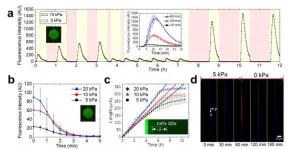SMART researchers found that e-scooters are not only a last-mile solution to complement transit services, but also provide a mobility service for short-distance transit trips
- Through a stated preference survey and mixed logit models, SMART researchers found that fare, transit transfer, and transit walking distance are significant factors driving the use of e-scooters as an alternative means of transit. The uncertainty is higher in predicting e-scooter usage preferences of male, young and high-income groups.
- In analyzing the travel demands under different levels of transit inconvenience, researchers discovered that a higher level of transit indirectness, more transfers, and longer access-egress walking result in a higher average probability of using e-scooters.
- The study revealed several implications for more effective harnessing and regulation of e-scooters as a mode of transit, including where to deploy e-scooters to satisfy demand unmet by other modes of transit, and how best to strike a balance between private operators and public welfare.
Singapore, 20 May 2021 - A new study by scientists from Future Urban Mobility (FM), an Interdisciplinary Research Group (IRG) at the Singapore-MIT Alliance for Research and Technology (SMART), MIT's research enterprise in Singapore, has found that e-scooters, while considered by some to be a hazard to pedestrians and others, provide an important alternative mode of transit, particularly in urban areas. This study sheds important light on the growing utility of e-scooters as a micro-mobility service in Singapore, and will also inform operators, planners, and policymakers on how best to harness and regulate this growing mode of mobility.
This new study is described in a paper titled, "E-scooter sharing to serve short-distance transit trips: A Singapore case", published recently in Transportation Research Part A: Policy and Practice. The paper was led by Zhejing Cao, PhD researcher at Tsinghua University when she was a visiting SMART FM student, and co-authored by SMART FM Lead Principal Investigator and Associate Professor at MIT Department of Urban Studies and Planning, Jinhua Zhao, and Xiaohu Zhang, an assistant professor at The University of Hong Kong, as well as Kelman Chua and Honghai Yu from Neuron, a Singapore e-scooter sharing operator.
Having first been introduced in Singapore around 2013, the e-scooter, also known in Singapore as a type of Personal Mobility Device (PMD), grew swiftly in popularity as an affordable and convenient mobility alternative to driving on Singapore's often congested roads during peak hours. The number of e-scooter users grew rapidly, swelling to around 100,000 registered e-scooters in Singapore by November 2019. Their popularity, however, came at a cost, with a number of fatal and non-fatal incidents involving e-scooters and their riders colliding with pedestrians, and ultimately led to a government-mandated ban on their use on footpaths across Singapore in November 2019.
Nonetheless, e-scooters are currently a legal mode of mobility on some 440km of cycling paths islandwide and remain in widespread use in Singapore today. An industry providing e-scooter sharing services has also become a new micro-mobility service in many cities worldwide, including Singapore, with the emergence of companies such as Telepod and Neuron. E-scooter sharing services provide a convenient micro-mobility service to the public, with rental locations situated across the island and with e-scooters that can be unlocked and paid for via a smartphone app. In addition, e-scooters are an environmentally-friendly alternative to other transportation options via reduced carbon emissions, engender improved life quality and health, and offer mobility aid to the elderly and the disabled.
In the Singapore Central Area (SCA), despite the high accessibility of the Mass Rapid Transit (MRT) system islandwide, the level of MRT indirectness (ratio of MRT network distance to the shortest street path) can be up to 4.112 - much higher than the global average. Furthermore, 20.98% of MRT trips in SCA have at least one transfer, higher than the average transfer level in Singapore, and passengers may have to walk an average of nearly one kilometre to enter and exit MRT stations. As a result, even if the origin and destination of a trip are in close geographical proximity, the overall travelling journey may be suboptimal and could be made more efficient.
Hence, while public transit serves efficiently for most trips in high-density urban environments such as the SCA, it can be inconvenient to take certain short-distance transit trips due to excessive indirectness, transfer, and walking distance. E-scooters can provide a valuable alternative in this segment. As such, it is valuable to explore and investigate the practicality and potential of using e-scooter sharing to replace certain short-distance transit trips where alternative transit methods may not be convenient.
In this study, the researchers collaborated with Neuron to explore the potential of using e-scooter sharing to replace short-distance transit trips in the SCA. The researchers conducted a stated preference survey of e-scooter users in the SCA and estimated mixed logit models to examine factors influencing a user's choice of e-scooter and transit. Based on this, the number of transit trips that can be replaced by e-scooters was calculated, and the researchers then analysed decisions made by e-scooter companies in terms of the trade-offs between serving more e-scooter trips and generating more revenue under varying fares.
The researchers found that fare, transit transfer, and transit walking distance have significant negative impacts on mode utilisation, with seemingly random choices among respondents. The uncertainty is higher in predicting e-scooter usage preferences of male, young and high-income groups. In analyzing the travel demands under different levels of transit inconvenience, the researchers discovered that a higher level of transit indirectness, more transfers, and longer access-egress walking result in a higher average probability of using e-scooters as a mode of transit.
Through analysing the decision of e-scooter companies in terms of the trade-offs between serving more e-scooter trips and making more revenue under varying fares, the researchers also found that the revenue losses borne by e-scooter companies can be significant if e-scooter mode share is maximised with no regard for other considerations, and vice versa.
In order to achieve a better balance between these two competing goals, the researchers found the optimal trade-off places in between two maximisation extremes, thus finding the sweet spot where a small sacrifice in maximizing one goal can prevent great loss in the other.
Zhejing Cao, lead author of the study, said, "E-scooter sharing services have shown enormous potential to become an important component of transit systems in urban environments in Singapore and other cities worldwide. Our study has highlighted the shortcomings of public transport in serving short-distance journeys in the SCA. E-scooter sharing services are able to bridge this gap and provide a convenient micromobility service to the public."
Xiaohu Zhang, co-author of the study, said, "E-scooter sharing as a new form of micro-mobility will improve the overall efficiency of urban transportation systems through enhancing last-mile connectivity as well as serving short-distance travels. It also has huge potential in the future if powered by autonomous driving technology."
The findings of the SMART study can be used to inform operators, planners, and policy-makers on how to harness and regulate this new mobility service, as well as provide suggestions on deploying shared e-scooters to satisfy demand unmet by transit, especially where transit travel involves greater indirectness, transfer, and access-egress walking distance. E-scooter supply strategies at different locations can be varied according to various socio-demographic factors which influence e-scooter preference and mode choices.
When public authorities and private operators take conflicting positions on whether to serve more individual trips or generate greater revenue, the trade-off can be gauged to achieve balance. Such possible means of mitigating disparity between the two goals and achieving balance include administrative regulations (e.g. requiring operators to serve inconvenient short transit trips at certain designated locations) or economic interventions (e.g. subsidies to operators provided by public authorities).
SMART FM Lead Principal Investigator and Associate Professor at MIT Department of Urban Studies and Planning, Jinhua Zhao, added, "Evidently, e-scooters present unique advantages and challenges for regulators and policymakers. If managed and regulated effectively, e-scooter sharing services can play an important role in the public mobility circuit, filling a gap in the short distance transit segment that public transport is, as yet, often unable to fill."
The research is carried out by SMART and supported by the National Research Foundation (NRF) Singapore under its Campus for Research Excellence And Technological Enterprise (CREATE) programme.
INFORMATION:
About the Future Urban Mobility (FM) Interdisciplinary Research Group (IRG)
The Future Urban Mobility (FM) Interdisciplinary Research Group (IRG) is one of five IRGs in the Singapore-MIT Alliance for Research and Technology Centre (SMART). FM harnesses new technological and institutional innovations to create the next generation of urban mobility systems to increase accessibility, equity, safety, and environmental performance for the citizens and businesses of Singapore and other metropolitan areas, worldwide. SMART-FM is supported by the National Research Foundation (NRF) Singapore and situated in the Campus for Research Excellence and Technological Enterprise (CREATE).
For more information, please log on to: https://fm.smart.mit.edu
About Singapore-MIT Alliance for Research and Technology (SMART) [???-??????????]
Singapore-MIT Alliance for Research and Technology (SMART) is MIT's Research Enterprise in Singapore, established by the Massachusetts Institute of Technology (MIT) in partnership with the National Research Foundation of Singapore (NRF) since 2007. SMART is the first entity in the Campus for Research Excellence and Technological Enterprise (CREATE) developed by NRF. SMART serves as an intellectual and innovation hub for research interactions between MIT and Singapore. Cutting-edge research projects in areas of interest to both Singapore and MIT are undertaken at SMART. SMART currently comprises an Innovation Centre and five Interdisciplinary Research Groups (IRGs): Antimicrobial Resistance (AMR), Critical Analytics for Manufacturing Personalized-Medicine (CAMP), Disruptive & Sustainable Technologies for Agricultural Precision (DiSTAP), Future Urban Mobility (FM) and Low Energy Electronic Systems (LEES).
SMART research is funded by the National Research Foundation Singapore under the CREATE programme.
For more information, please visit http://smart.mit.edu
For media queries, please contact:
Gavin Choo
SMART@bluetotem.co
+65 9297 5828






